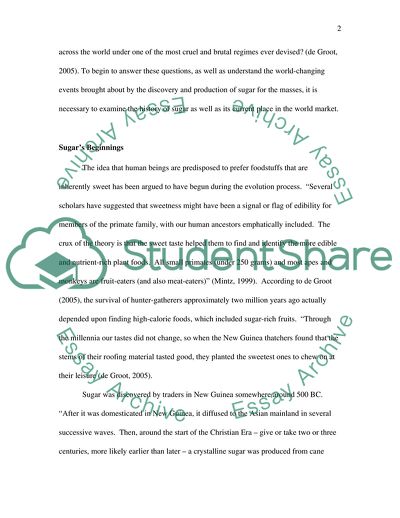Cite this document
(The History of Sugar and How It Has Shaped Western Culture Assignment, n.d.)
The History of Sugar and How It Has Shaped Western Culture Assignment. https://studentshare.org/agriculture/1703643-the-history-of-sugar-and-how-it-has-shaped-western-culture
The History of Sugar and How It Has Shaped Western Culture Assignment. https://studentshare.org/agriculture/1703643-the-history-of-sugar-and-how-it-has-shaped-western-culture
(The History of Sugar and How It Has Shaped Western Culture Assignment)
The History of Sugar and How It Has Shaped Western Culture Assignment. https://studentshare.org/agriculture/1703643-the-history-of-sugar-and-how-it-has-shaped-western-culture.
The History of Sugar and How It Has Shaped Western Culture Assignment. https://studentshare.org/agriculture/1703643-the-history-of-sugar-and-how-it-has-shaped-western-culture.
“The History of Sugar and How It Has Shaped Western Culture Assignment”. https://studentshare.org/agriculture/1703643-the-history-of-sugar-and-how-it-has-shaped-western-culture.


